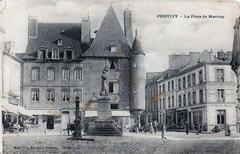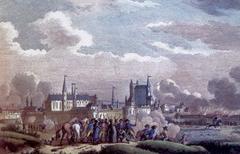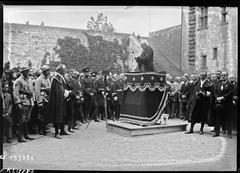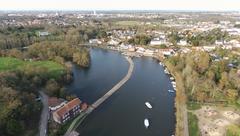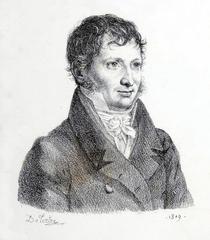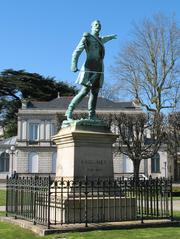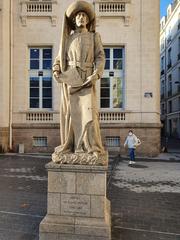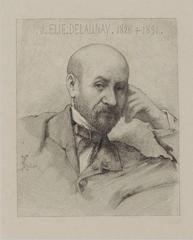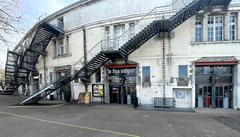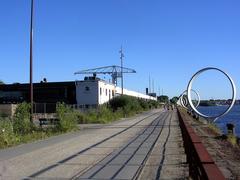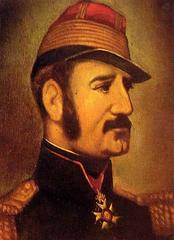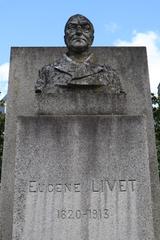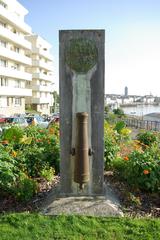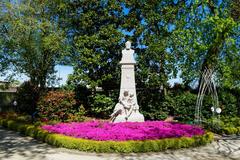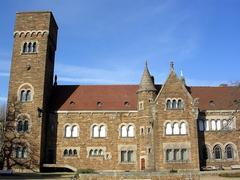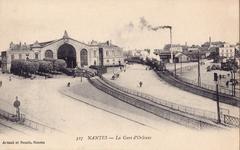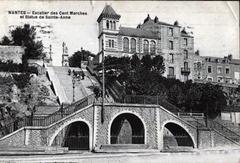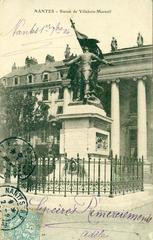General De Gaulle Statue Nantes: Visiting Hours, Tickets, and Historical Site Guide
Date: 14/06/2025
Introduction
Located in the heart of Nantes, France, the Général De Gaulle statue is an enduring tribute to one of the country’s most revered leaders. More than a commemorative monument, it encapsulates the city’s wartime resilience and central role in the French Resistance during World War II. Charles de Gaulle, leader of Free France and founder of the Fifth Republic, left a profound impact on Nantes—a city that earned the rare distinction of being named a “Companion of the Liberation.” Visiting the statue is an invitation to reflect on a narrative of courage, sacrifice, and liberation deeply woven into the city’s identity (Monumentum, metropole.nantes.fr, France Guide).
Table of Contents
- Introduction
- Historical Significance: De Gaulle and Nantes
- The Général De Gaulle Statue: Artistic and Symbolic Features
- Visiting Information
- Nantes’ Memorial Landscape
- Frequently Asked Questions (FAQ)
- Related Articles
- Summary and Visitor Recommendations
- Sources
Historical Significance: De Gaulle and Nantes
Nantes’ history is inseparably linked to the events of World War II. In October 1941, following the assassination of a German officer by the Resistance, Nazi authorities executed fifty hostages in Nantes—a tragedy that had a galvanizing effect on the city and the nation. In recognition of this sacrifice and unwavering defiance, Charles de Gaulle awarded Nantes the prestigious title “Companion of the Liberation” on November 11, 1941, making it one of only five cities in France to receive this honor (Monumentum).
This rare recognition underscores the importance of the Général De Gaulle statue as a symbol of Nantes’ pivotal role in the resistance and in shaping France’s modern identity.
The Général De Gaulle Statue: Artistic and Symbolic Features
The statue, sculpted by Françoise Boudier, is an imposing 2.20-meter bronze monument situated at 20 Allée des Tanneurs on the Esplanade des Cinq communes-compagnon de la Libération. This spot faces the Cours des 50 Otages, a boulevard commemorating the fifty hostages and serving as a focal point of remembrance in the city (metropole.nantes.fr).
Boudier’s work depicts De Gaulle in full military regalia, his figure upright and forward-facing, conveying both dignity and momentum. The meticulous attention to detail—from the crispness of his uniform to the medals and iconic kepi—captures De Gaulle’s authority and leadership. The statue’s patinated bronze surface and dynamic posture create a striking visual presence, especially as sunlight accentuates the folds of his uniform and the determination in his expression (museedelaresistanceenligne.org).
The statue’s location is highly symbolic. Its direct line of sight to the memorial of the fifty hostages establishes a visual and emotional connection between local acts of sacrifice and the broader legacy of national liberation (abp.bzh). Inaugurated in 2010 on the 70th anniversary of De Gaulle’s famous Appel du 18 Juin, the statue embodies values of unity, resilience, and liberty that continue to resonate in Nantes.
Visiting Information
Location & Access
- Address: 20 Allée des Tanneurs, Esplanade des Cinq communes-compagnon de la Libération, Nantes
- Nearby landmarks: Cours des 50 Otages, Château des Ducs de Bretagne, Musée d’Arts de Nantes (France Guide)
Hours & Admission
- Opening hours: Open 24/7, year-round; no restrictions as it is in a public space.
- Admission: Free of charge.
Accessibility
- Wheelchair accessible with paved walkways and ramps.
- Interpretive signage is available in French and English.
Transportation
- Public transport: Closest tram stop is “Château des Ducs de Bretagne”; “Commerce” is also nearby. Numerous bus lines serve the area.
- On foot or by bike: The statue is within walking distance of major city attractions and well-connected by pedestrian routes and bike paths.
Visitor Experience & Photography
- Photography: Permitted and encouraged—optimal lighting is in early morning or late afternoon.
- Interpretation: Informative plaques provide context about De Gaulle and Nantes’ wartime experience.
- Guided tours: Many walking tours of Nantes’ historical center include the statue as a key stop (French Moments).
- Commemorations: Ceremonies are held on June 18 (De Gaulle’s appeal), May 8 (Victory in Europe), and November 11 (Armistice Day).
Nantes’ Memorial Landscape
The Général De Gaulle statue is a vital element of Nantes’ broader memorial network, which includes:
- Monument aux Cinquante Otages: Commemorating the fifty hostages executed in 1941.
- Château des Ducs de Bretagne: Features exhibitions on the city’s WWII history within its museum.
- Musée de la Résistance: Dedicated to the French Resistance, providing further context (museedelaresistanceenligne.org).
These landmarks together tell the story of resistance, suffering, and renewal, shaping both the city’s identity and its civic life.
Frequently Asked Questions (FAQ)
Q: What are the visiting hours for the Général De Gaulle statue?
A: The statue is accessible at any time, day or night.
Q: Is there an entry fee to visit the statue?
A: No, it is free to access.
Q: Are guided tours available?
A: Yes, many historical walking tours in Nantes include the statue.
Q: How do I reach the statue by public transport?
A: Use the “Château des Ducs de Bretagne” tram stop or any of several nearby bus lines.
Q: Is the site wheelchair accessible?
A: Yes, the area is designed for accessibility.
Q: What other WWII sites are nearby?
A: The Cours des 50 Otages, Château des Ducs de Bretagne, and Musée de la Résistance are all within easy walking distance.
Related Articles
Summary and Visitor Recommendations
The Général De Gaulle statue in Nantes stands as more than a monument; it is a living testament to France’s resilience in the face of adversity and the city’s critical role in the French Resistance. Its prominent placement, artistic quality, and deep symbolism powerfully convey the connection between Nantes’ local history and the national story of liberation.
Visitors enjoy unrestricted, year-round access to this evocative site, with excellent public transport and facilities ensuring an inclusive experience. The statue’s proximity to other key WWII memorials and cultural attractions—alongside guided tours and regular commemorative events—offers a comprehensive and moving journey into history.
Engagement with the statue inspires reflection on the enduring values of liberty and unity that shaped modern France. For a richer visit, use resources like the Audiala app for guided audio tours and stay updated via local tourism sites. Whether you are a history enthusiast or a cultural traveler, the Général De Gaulle statue is a compelling destination at the crossroads of remembrance and contemporary Nantes. (museedelaresistanceenligne.org, abp.bzh, Nantes Tourism)
Sources and Further Reading
- Monumentum
- Metropole Nantes
- France Guide
- Musée de la Résistance en Ligne
- abp.bzh
- Nantes Tourism
- Archives Nantes
- French Moments
- Levoyageanantes.fr
